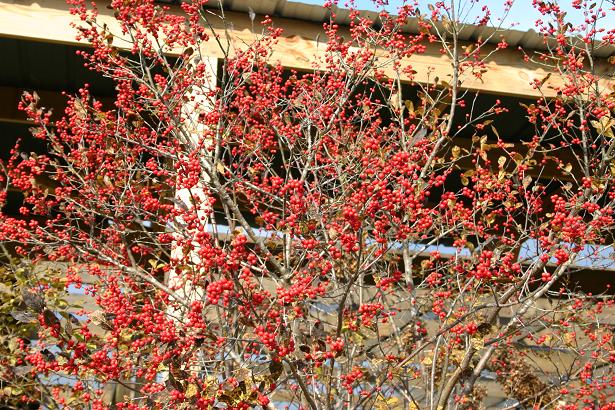Georgia Gardener Newsletter Cool Plant: January 25, 2007
Species Native Range: Eastern half of the United States into Canada
Hardiness: USDA Zones 3-9
Mature Size: 6-8 feet tall and wide
Exposure: Full Sun to Light Shade
Soil: Organic soil that is average to wet; withstands flooding
Ease of Culture: Easy
Winterberry is a must for a wildlife garden as its stunning winter display of red berries is attractive to both people and birds. It also
makes for a great winter focal point. Winterberry is very adaptable and will grow in average to wet soil and tolerates occasional standing
water. A large planting of these at the edge of a lake or stream also helps to stabilize the banks.
Since most hollies are dioecious (separate male and female plants), only the female plants produce the eye-catching red berries. In order
to have fruit, they require the nearby presence of a male plant that blooms at the same time. For Winter Red Winterberry, male cultivars
such as 'Apollo' and 'Southern Gentleman' will be your best companions. You will need one male for approximately every 8 females and
the planting distances should be within 25 feet. When designing your garden with Winterberry, plant the males in a less noticeable location
as they are rather dull. Fortunately, they tend to be smaller than the female plants and can often be hidden behind them.
For more information, click
here.
Sources:
Although I have seen or purchased this plant from the nurseries below, I cannot guarantee that they
will have it in stock at the time this newsletter is published.
Bannister Creek Nursery: Duluth
Buck Jones Nurseries: Grayson and Woodstock
Nearly Native Nursery: Fayetteville
Pike Family Nurseries: multiple locations
Woody's Nursery: Duluth 770-476-1705
Copyright © 2007 by Theresa Schrum - All rights reserved
No part of this website may be reproduced without the expressed written permission of Theresa Schrum

